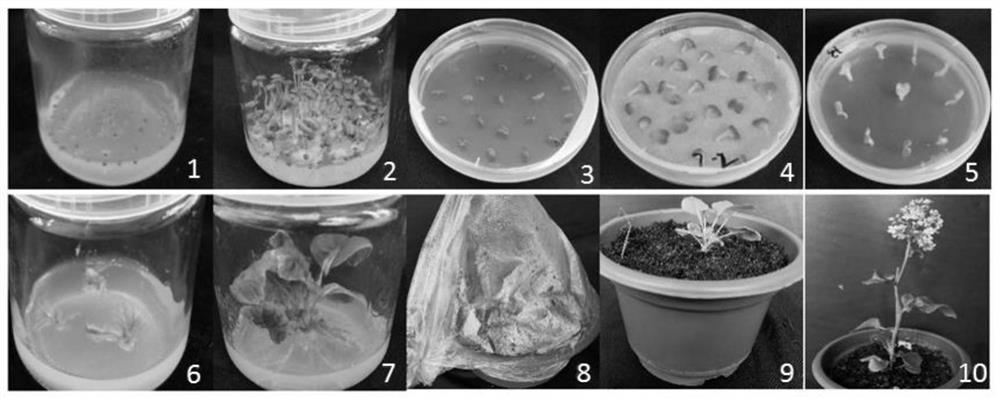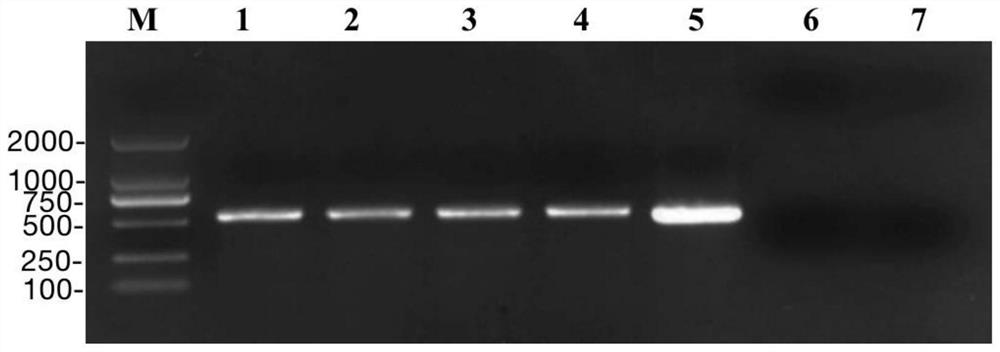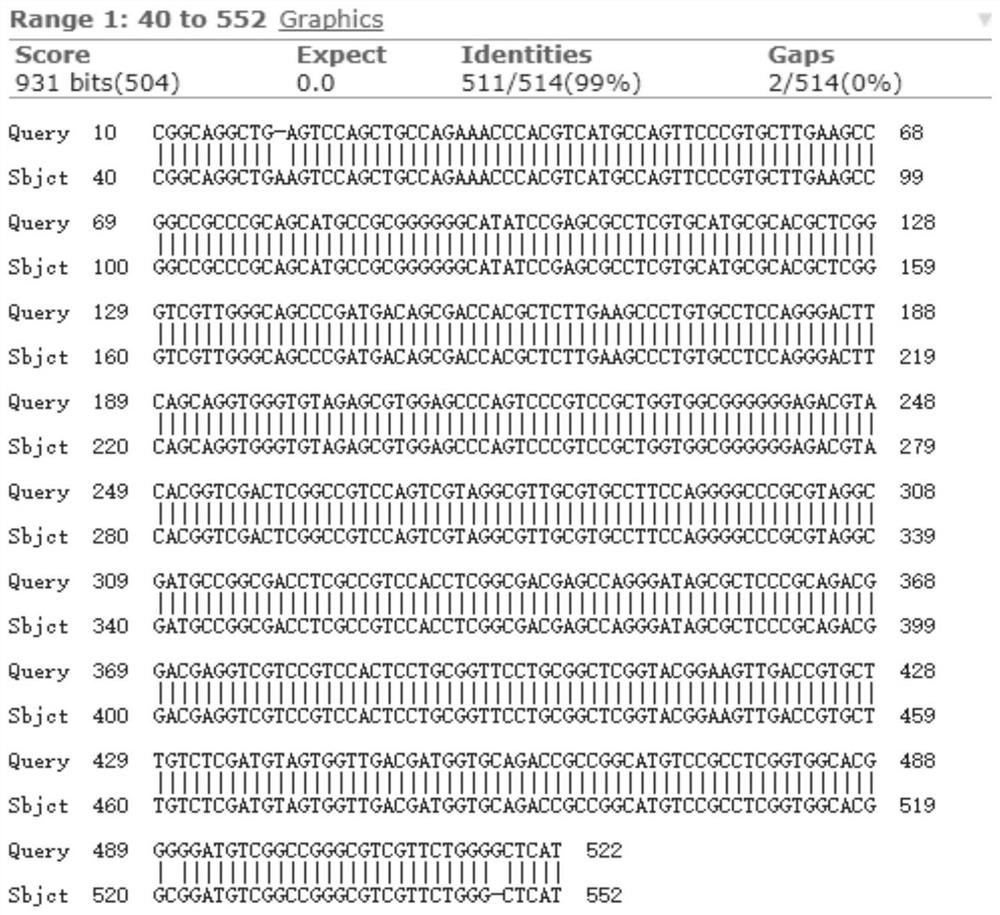Agrobacterium-mediated flowering cabbage genetic transformation method
A genetic transformation method and technology mediated by Agrobacterium, applied in the field of genetic transformation of cabbage mediated by Agrobacterium, can solve the problems affecting the application of genetic engineering, low regeneration rate, difficulty in regeneration of adventitious buds, etc., and achieve low pollution rate, comprehensive High performance, simple and efficient operation
- Summary
- Abstract
- Description
- Claims
- Application Information
AI Technical Summary
Problems solved by technology
Method used
Image
Examples
Embodiment 1
[0042] 1. Materials
[0043] 1.1 Plant material
[0044] The experiment was carried out from July 2018 to June 2019 in the Vegetable Cultivation and Physiology Laboratory, Molecular Laboratory and Tissue Culture Laboratory of the College of Horticulture, South China Agricultural University. The variety of Chinese cabbage tested was "Youlu 501", which was bred by the Guangzhou Academy of Agricultural Sciences, and the seeds were self-bred for multiple generations in our laboratory.
[0045] 1.2 Medium
[0046] Table 1 medium formula
[0047]
[0048] 1.3 Agrobacterium
[0049] Escherichia coli strains were DH5α (Vazyme), Agrobacterium GV3101 (Vidi), and the plant overexpression vector was pCAMBIA3301 (Dingguo).
[0050] 1.4 Detection primers
[0051] The sequence of the primer Bar gene used for the detection of Chinese cabbage positive seedlings is:
[0052] Bar-F: ATGAGCCCAGAACGACGCC;
[0053] Bar-R:TCAAATCTCGGTGACGGGCA;
[0054] 2. Test method
[0055] 2.1 Genetic...
Embodiment 2
[0080] Example 2 Infection Concentration
[0081] 1. Materials
[0082] 1.1 plant material: same as embodiment 1;
[0083] 1.2 culture medium: same as embodiment 1;
[0084] 1.3 Agrobacterium: same as Example 1;
[0085] 1.4 Detection primers: same as Example 1;
[0086] 2. Test method
[0087] 2.1 Genetic transformation steps of Chinese cabbage
[0088] Take the stipe cotyledons of aseptic seedlings of Chinese cabbage with a seedling age of 3 days as explants, and pre-cultivate them for 3 days; expand and shake the Agrobacterium containing pCAMBIA3301 carrier in LB liquid medium, centrifuge at 4000rpm for 15min, and discard the supernatant; Resuspend the bacteria in the staining medium to make the optical density OD 600 adjusted to different concentrations (OD 600 0.3~0.4, 0.4~0.5, 0.5~0.6, 0.6~0.7, 0.7~0.8), then 28°C, 200rpm shaking culture for 4h to obtain the Agrobacterium infection solution and infect it, and the remaining steps are consistent with Example 1 ;
...
Embodiment 3
[0095] Example 3 Infection time
[0096] 1. Materials
[0097] 1.1 plant material: same as embodiment 1;
[0098] 1.2 culture medium: same as embodiment 1;
[0099] 1.3 Agrobacterium: same as Example 1;
[0100] 1.4 Detection primers: same as Example 1;
[0101] 2. Test method
[0102] 2.1 Genetic transformation steps of Chinese cabbage
[0103] The petiolate cotyledons of aseptic seedlings of Chinese cabbage with a seedling age of 3 days were taken as explants, pre-cultivated for 3 days, and infected with the prepared Agrobacterium infection solution for 5 minutes, 10 minutes, and 15 minutes respectively. All the other steps are consistent with embodiment 1;
[0104] 2.2 Detection of transgenic plants: same as Example 1;
[0105] 3. Results and Analysis
[0106] Infection time has a great influence on the effect of transgenic transformation of Chinese cabbage. If the infection time is too short, the transformation rate is low, but there are many clustered buds, the f...
PUM
| Property | Measurement | Unit |
|---|---|---|
| length | aaaaa | aaaaa |
Abstract
Description
Claims
Application Information
 Login to View More
Login to View More - R&D
- Intellectual Property
- Life Sciences
- Materials
- Tech Scout
- Unparalleled Data Quality
- Higher Quality Content
- 60% Fewer Hallucinations
Browse by: Latest US Patents, China's latest patents, Technical Efficacy Thesaurus, Application Domain, Technology Topic, Popular Technical Reports.
© 2025 PatSnap. All rights reserved.Legal|Privacy policy|Modern Slavery Act Transparency Statement|Sitemap|About US| Contact US: help@patsnap.com



